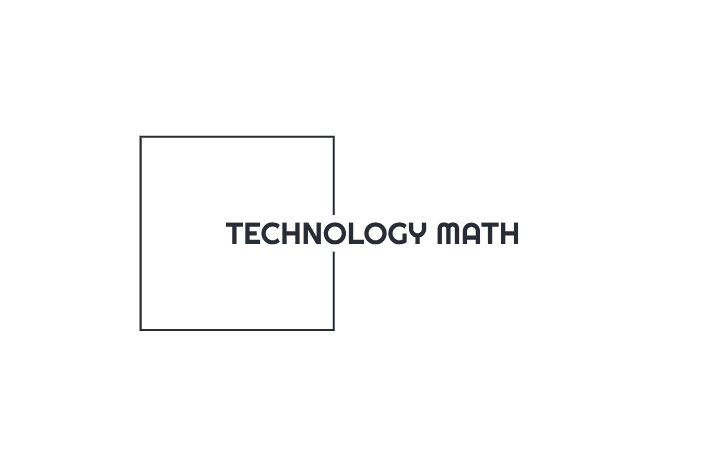
Data integration tools are the backbone of modern data operations. They help organizations bring together data from different sources, making it easier to analyze and make informed decisions. One tool that’s often at the top of the list for many businesses is Fivetran. Known for its easy-to-use interface and vast array of connectors, Fivetran has become a popular choice in the ETL/ELT space.
But as businesses grow and data needs become more complex, it’s worth considering other options. In this blog, we’ll take a closer look at some of Fivetran’s competitors. We’ll compare their features and see how well they stack up for large-scale data operations.
Why Look for Fivetran Alternatives?
There are a few reasons why organizations might consider alternatives to Fivetran. While Fivetran is a solid choice for many, it’s not the perfect fit for every business, especially as needs evolve over time.
- Cost: Fivetran’s pricing is consumption-based, which means the more data you process, the more you pay. For businesses with rapidly growing data volumes, this can get expensive quickly. Alternatives may offer more predictable pricing structures or lower overall costs, especially as your data scales.
- Features: While Fivetran covers the basics well, some competitors offer additional features that may be more suited to specific business needs. Whether it’s advanced transformation capabilities, custom connectors, or deeper analytics tools, alternatives may provide more flexibility in how you handle your data.
- Scalability: As companies grow, they often find that their data operations become more complex. Handling larger data volumes, supporting a wider variety of data sources, and ensuring everything runs smoothly can push tools to their limits. Some alternatives are built with scalability in mind, making them better equipped to handle the demands of large-scale operations.
- Flexibility: Different businesses have different data needs. Some need a high degree of customization, while others might prefer a more hands-off, user-friendly approach. Certain alternatives allow for greater control over your data pipelines, giving you the ability to tweak or adjust processes as needed.
For large-scale data operations, the right tool is crucial. It’s not just about transferring data from one place to another; it’s about ensuring that data flows seamlessly, stays accurate, and is available when you need it for analysis. Selecting a tool that aligns with your business’s needs—both now and in the future—can make a significant difference in how efficiently you manage your data.
Top Competitors to Fivetran
While Fivetran is a popular choice for many businesses, there are several alternatives that offer unique features and strengths. Let’s take a look at some of the top competitors and how they stand out:
1. Hevo Data
Hevo Data simplifies data integration with a no-code interface, real-time data streaming, and automatic schema mapping.
Key Features
Hevo Data stands out with its no-code interface, real-time data streaming, automatic schema mapping, and built-in transformation capabilities. It’s designed to make data integration easy, even for non-technical teams.
Ideal Use Case: Hevo Data is ideal for businesses that need seamless integration across multiple data sources with minimal maintenance. It’s a great choice for organizations that want to focus on their core operations without getting bogged down by complex data management tasks.
2. Airbyte
Airbyte offers open-source flexibility, giving businesses full control over their data pipelines.
Key Features
Airbyte is known for its open-source flexibility, vast library of connectors, and strong support for Change Data Capture (CDC). This makes it an excellent option for teams that need to customize their data pipelines.
Ideal Use Case: Airbyte is perfect for companies that need full control over their data pipelines and prefer an open-source solution. Its flexibility makes it well-suited for technical teams with the expertise to build custom integrations.
3. Stitch
Stitch is a straightforward, affordable solution for startups and small businesses.
Key Features
Stitch provides a simplified ETL process with transparent pricing and easy setup. It’s designed to help businesses get up and running quickly without the need for complicated configurations.
Ideal Use Case: Stitch is ideal for startups and small businesses looking for a simple, cost-effective data integration solution. Its simplicity and affordable pricing make it a good fit for businesses that are just starting to scale their data operations.
4. Matillion
Matillion’s cloud-native platform offers advanced analytics and a user-friendly interface.
Key Features
Matillion is a cloud-native platform that features an intuitive drag-and-drop interface and strong analytics capabilities. It integrates well with cloud environments, making it perfect for businesses relying on cloud-based data operations.
Ideal Use Case: Matillion is best for large organizations that are heavily invested in cloud infrastructure. Its robust features and ease of use make it a great choice for enterprises looking to scale their data operations efficiently in the cloud.
5. Talend
Talend excels in complex data integration with robust governance and transformation features.
Key Features
Talend offers extensive integration options, strong data governance capabilities, and advanced transformation features. It’s designed for complex data operations and can be customized to meet the needs of large enterprises.
Ideal Use Case: Talend is suited for enterprises with complex data needs that require a high degree of customization. Organizations that need advanced data governance and transformation features will find Talend to be a powerful tool for their operations.
6. Apache Airflow
Apache Airflow provides an open-source platform for highly customizable and granular control over data workflows.
Key Features
Apache Airflow is an open-source platform that offers high customizability, robust scheduling, and monitoring features. It’s ideal for technical teams that need fine-grained control over their ETL workflows.
Ideal Use Case: Apache Airflow is best for technical teams that require complete control over their data workflows. Its flexibility and advanced scheduling capabilities make it a strong choice for organizations with in-house technical expertise who need to manage complex integrations.
Each of these tools has its own strengths, and the best choice for your business will depend on your specific needs—whether that’s simplicity, customizability, or scalability. One of these Fivetran alternatives is likely to be the perfect fit for your data integration strategy.
Comparison of Performance and Scalability
When it comes to large-scale data operations, performance and scalability are crucial factors that influence which tool is the best fit for your organization. Here’s how some of Fivetran competitors measure up:
1. Performance in High-Volume Environments
Handling data at scale is an essential requirement for businesses with high-volume data environments. Fivetran performs exceptionally well in real-time data integration, providing fast, reliable data synchronization across various platforms. However, some competitors, like Matillion and Talend, may be better suited for batch processing in certain environments. These tools often excel in situations where massive volumes of data need to be processed in stages, rather than continuously streaming in real-time. Depending on your specific needs—whether you require a continuous data flow or prefer to process data in large batches—these competitors offer different performance strengths that may be more appropriate for certain workflows.
2. Real-Time vs Batch Processing
Fivetran is known for its real-time data processing capabilities, which makes it a strong choice for businesses requiring up-to-the-minute insights. The platform is designed to support live streaming data and handle dynamic changes as they happen, which is particularly beneficial for industries that rely on up-to-the-second updates, such as e-commerce or finance.
However, Hevo Data also offers strong real-time capabilities, allowing businesses to stream data without delay, making it ideal for those looking for seamless, live data flows. On the other hand, Matillion and Talend typically focus more on batch processing, which can be better suited to high-volume environments where real-time data isn’t always necessary. These platforms efficiently handle large datasets in stages, making them ideal for organizations that prioritize batch workloads over live updates.
3. Scalability in Cloud Environments
Scalability is another critical factor to consider when selecting a data integration tool. For businesses operating in multi-cloud environments, Matillion and Talend shine with their robust architectures designed to handle large-scale cloud infrastructures.
In contrast, Hevo Data also offers scalable solutions, though its focus is more on ease of use and real-time integration. It’s ideal for businesses looking for a tool that can grow with them while offering flexibility in their cloud environments. For large-scale cloud operations, however, Matillion and Talend might be the more fitting choices, thanks to their comprehensive support for multi-cloud environments and cloud-specific functionalities.
Pricing: A Comparison of the Cost of Ownership
When evaluating data integration tools, pricing is often a key consideration. Let’s compare the cost structure of Fivetran and its competitors to better understand which offers the best value for large-scale operations.
| Tool | Pricing Model | Cost Considerations | Total Cost of Ownership |
| Fivetran | Consumption-based | Can become expensive as data volume grows. High costs for large-scale operations. | Ongoing costs can be high with scaling. Pay-as-you-go model can add up. |
| Hevo Data | Scalable, Flexible | Affordable, flexible pricing without hidden costs. Scalable for growth. | More predictable and scalable. Ideal for cost management in the long run. |
| Matillion | Tiered Pricing | Predictable pricing but may incur additional costs for advanced features. | Tiered pricing offers predictability, but extra charges for additional services. |
| Talend | Tiered Pricing | Predictable pricing, but additional costs for premium features or support. | Can involve high costs for advanced features and platform support. |
| Stitch | Simplified, Transparent | Generally low-cost, but may lack scalability and customization for larger operations. | Low-cost for basic operations, but may struggle with larger-scale needs. |
Choosing the Right Tool for Your Business
Selecting the right data integration tool is crucial to ensuring smooth operations and scalability as your business grows. Here are some key factors to consider when evaluating the best solution for your needs:
1. Scale of Operations
The size and complexity of your data operations play a major role in your choice. For small businesses or startups, a simpler, more affordable tool like Stitch might be sufficient. However, for larger enterprises dealing with vast amounts of data, tools like Matillion or Talend may be more suitable due to their ability to handle complex, high-volume environments.
2. Complexity of Data Workflows
If your data workflows involve complex transformations or require significant customization, tools like Talend and Apache Airflow provide deep customization and robust features for complex operations. On the other hand, if your needs are more straightforward and you require simplicity, Hevo Data or Stitch might be a better fit.
3. Cloud vs. On-Premises Solutions
If your business is heavily invested in cloud infrastructure, Matillion and Hevo Data offer cloud-native solutions that integrate seamlessly with platforms like AWS, Google Cloud, and Azure. For companies that require on-premises solutions or hybrid environments, Airbyte may be a more flexible choice as it supports both cloud and on-premises deployments.
4. Budget Constraints
For businesses with tight budgets, Stitch and Hevo Data are great options due to their affordable pricing structures and transparent cost models. While Fivetran offers excellent real-time capabilities, its consumption-based pricing can become expensive as data volumes scale up. Hevo Data provides a more predictable cost structure, making it an attractive option for businesses looking to manage costs while maintaining performance.
5. Level of Technical Expertise
If you have a team with limited technical expertise, it’s important to choose a tool that is easy to use and requires minimal technical know-how. Hevo Data stands out here with its intuitive, no-code interface and built-in transformation capabilities, making it easier for non-technical teams to integrate data. Tools like Apache Airflow or Airbyte are more suited to teams with strong technical skills due to their open-source nature and customization options.
Conclusion
When comparing Fivetran to its competitors, several tools stand out for their unique strengths and abilities to cater to large-scale data operations. Hevo Data, in particular, proves to be a standout option, offering a blend of scalability, ease of use, and cost-effectiveness that makes it well-suited for growing businesses. With its intuitive, no-code interface and robust real-time data streaming, Hevo Data ensures that companies can scale their data operations without incurring high costs or requiring extensive technical expertise.
For businesses seeking a powerful, user-friendly data integration solution, Hevo Data offers a compelling alternative to Fivetran. It can seamlessly handle complex data workflows while maintaining affordable, transparent pricing—making it an ideal choice for organizations looking to future-proof their data infrastructure.
If you’re ready to explore how Hevo Data can transform your large-scale data operations, we invite you to experience its features firsthand. Sign up for a free trial to see how Hevo can help you streamline your data integration process.







